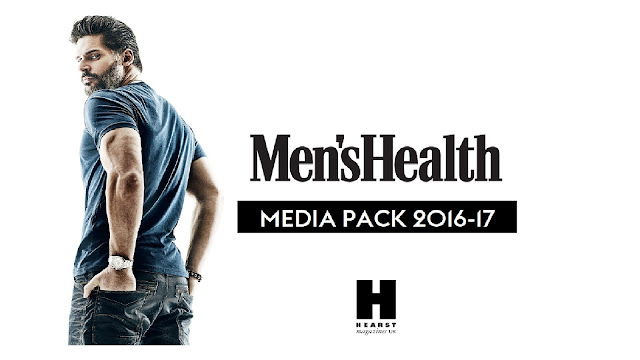Learner response: Newspapers assessment
1) Type up your feedback in full (you don't need to write the mark and grade if you want to keep this confidential).
WWW- A very strong, comprehensive assessment that shows excellent understanding of the topic. You have clearly revised and used theory and the CSPs effectively.
EBI- Keep an eye out on written English! Words like 'argument' need to be right if you're aiming for A*.
Revise IPSO.
Look over the mark scheme for Qs in terms of adding the depth and sophistication to reach the top band (level 4, 16-20 marks)
2) Read the whole mark scheme for this assessment carefully. Identify three potential points that you could have made in your Question 3 answer - the i newspaper standing for "quality, clarity and independence".
3) Now use the mark scheme to identify three potential points that you could have made in your Question 4 answer - arguments against statutory regulation of the newspaper industry.
4) Now use the mark scheme to identify three potential points that you could have made in your Question 5 answer - whether the pluralist model allows the newspaper industry to operate effectively.
5) Finally, look over your mark, teacher comments and the mark scheme - plus your answers to the task above - to write a complete essay plan for Question 5.
You can either use something similar to your actual answer or alternatively start from scratch. Make sure it is an extensive, detailed plan focused on the question (Curran & Seaton, pluralism and how effective the newspaper industry operates) and make sure you include specific references to the CSPs - the i and Daily Mail/MailOnline. Aim for around five paragraphs in total and make sure you cover both sides of the argument to some extent.
Into-
Paragraph 1 (support view)-
Paragraph 2 (support view)-
Paragraph 3 (against view)-
Conclusion-
WWW- A very strong, comprehensive assessment that shows excellent understanding of the topic. You have clearly revised and used theory and the CSPs effectively.
EBI- Keep an eye out on written English! Words like 'argument' need to be right if you're aiming for A*.
Revise IPSO.
Look over the mark scheme for Qs in terms of adding the depth and sophistication to reach the top band (level 4, 16-20 marks)
2) Read the whole mark scheme for this assessment carefully. Identify three potential points that you could have made in your Question 3 answer - the i newspaper standing for "quality, clarity and independence".
- Clarity is achieved through clean design – like a website
- Image heavy with stories short and easy to digest within the daily commute
- The website inews.co.uk gives users the option of having the story selection determined by editorial or by most popular, meaning there is still a gatekeeping process maintaining quality and clarity.
3) Now use the mark scheme to identify three potential points that you could have made in your Question 4 answer - arguments against statutory regulation of the newspaper industry.
- The phone hacking scandal that sparked the Leveson Inquiry was covered by criminal law – the police should be the only regulators for the newspaper industry. Similarly, libel laws exist to protect victims of press intrusion and people like Chris Jefferies (wrongly accused of murder) were compensated financially.
- The i already stands for “quality, clarity and independence” – if it is failing to do this, the pluralist media marketplace will see audiences go elsewhere. Government regulation should not be required.
- The importance of a free press is essential to a healthy democracy. Government influence over the newspaper industry is a corruption of that democratic ideal. Would the i be free to describe Theresa May’s “Salzburg disaster” (front page, 21 September) if government had influence over the press?
4) Now use the mark scheme to identify three potential points that you could have made in your Question 5 answer - whether the pluralist model allows the newspaper industry to operate effectively.
- Theoretically, the newspaper industry supports the pluralist model – success or failure of newspapers is driven by audience demand and the staggering decline in UK print newspaper sales demonstrates this (30m in 2003 to 12m in 2017 – Ofcom).
- Generally, newspaper ownership and control is limited to a small number of super-rich individuals (e.g. Alexander Lebedev who started the i before selling it to Johnston Press and the Rothermere family owning the Daily Mail. Jonathan Harmsworth, 4 th Viscount Rothermere, is estimated to be worth £700m). This would suggest the newspaper industry is controlled by the elite (a more Marxist perspective).
- Clay Shirky has discussed the ‘End of audience’ and the rise in ‘mass amateurisation’. This may be an example of the rise of pluralism but it is arguably destroying trust in news and the ability for traditional news institutions to make money (Shirky describes the internet leading to “an abundance of content and a scarcity of profit”).
5) Finally, look over your mark, teacher comments and the mark scheme - plus your answers to the task above - to write a complete essay plan for Question 5.
You can either use something similar to your actual answer or alternatively start from scratch. Make sure it is an extensive, detailed plan focused on the question (Curran & Seaton, pluralism and how effective the newspaper industry operates) and make sure you include specific references to the CSPs - the i and Daily Mail/MailOnline. Aim for around five paragraphs in total and make sure you cover both sides of the argument to some extent.
Into-
- Theoretically the newspaper industry supports the pluralist model- success or failure of newspapers is driven by audience demand and the staggering decline in UK print newspaper sales demonstrates this (30m in 2003 to 12m in 2017 – Ofcom).
Paragraph 1 (support view)-
- Audiences choose what they ready- MailOnline website is based on an algorithm counting clicks rather than gatekeepers
- Clay Shirky has discussed the ‘End of audience’ and the rise in ‘mass amateurisation’. This may be an example of the rise of pluralism but it is arguably destroying trust in news and the ability for traditional news institutions to make money (Shirky describes the internet leading to “an abundance of content and a scarcity of profit”). Citizen journalism may have influenced the news agenda in places (overruling traditional editors broadly following Galtung and Ruge’s News Values) but it is also poor quality, difficult to verify and often soft news ‘clickbait’ rather than important for society.
Paragraph 2 (support view)-
- The i newspaper, in contrast, presents the summit (21 September edition) as ‘The Salzburg disaster’ and gives prominent space on its double-page spread (also p6-7) to French President Macron criticising leading Brexiteers. This arguably supports Curran and Seaton’s view that the newspaper industry offers a pluralist approach with a variety of values and ideologies available to audiences.
Paragraph 3 (against view)-
- This decline in quality threatens the future of the newspaper industry – in no way could it be argued to be ‘operating effectively’. We are now in the era of ‘fake news’ with trust in journalism falling and audiences largely unwilling to pay for news.
- The i newspaper is generally viewed as leftwing despite its mission statement of “Quality, clarity and independence”. Indeed, the i’s parent paper the Independent launched in 1986 with the banner: “Free from party political bias, free from proprietorial influence”. Could it be argued that the UK newspaper industry is so strongly rightwing that when a newspaper plants itself in the centre ground (as the i newspaper intends) it inadvertently appears to be leftwing? The i’s content (e.g. the briefing on p2) explicitly offers readers a broad diet with pages summarising the content and editorial line from other news publications from the UK and worldwide. Perhaps the i newspaper captures pluralist ideals while the Daily Mail offers evidence for Marxists of a ‘ruling elite’?
- Bring all points together
- Pluralism has supported the online media industries and companies but not the newspaper industry.


Comments
Post a Comment